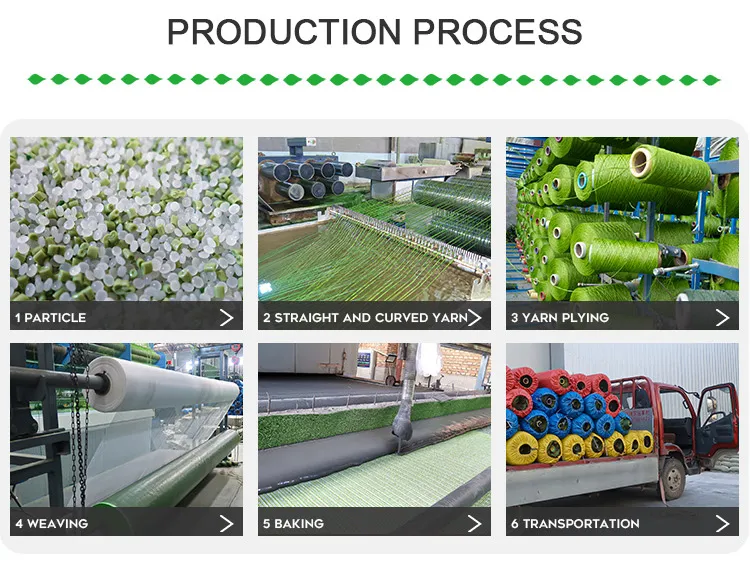
- Afrikaans
- Arabic
- Belarusian
- Bengali
- Czech
- Danish
- Dutch
- English
- Esperanto
- Estonian
- Finnish
- French
- German
- Greek
- Hindi
- Hungarian
- Icelandic
- Indonesian
- irish
- Italian
- Japanese
- kazakh
- Rwandese
- Korean
- Kyrgyz
- Lao
- Latin
- Latvian
- Malay
- Mongolian
- Myanmar
- Norwegian
- Persian
- Polish
- Portuguese
- Romanian
- Russian
- Serbian
- Spanish
- Swedish
- Tagalog
- Tajik
- Thai
- Turkish
- Turkmen
- Ukrainian
- Urdu
- Uighur
- Uzbek
- Vietnamese
artificial grass and installation
Dec . 05, 2024 10:30 Back to list
The Benefits of Artificial Grass and Its Installation
In recent years, artificial grass has gained immense popularity as a cost-effective, low-maintenance alternative to natural grass. Whether for residential or commercial use, synthetic turf provides a robust solution for those seeking a lush, green lawn year-round. This article explores the various benefits of artificial grass and offers insight into the installation process, making it an attractive option for anyone considering a landscape upgrade.
Benefits of Artificial Grass
1. Low Maintenance One of the most significant advantages of artificial grass is its low maintenance requirements. Unlike natural grass, which requires frequent mowing, watering, fertilizing, and pest control, synthetic turf is virtually hassle-free. Once installed, it looks pristine without the need for regular upkeep. Homeowners can save both time and money, allowing them to enjoy their outdoor spaces rather than spend their weekends on lawn care.
2. Water Conservation Water scarcity is an increasingly pressing issue in many parts of the world. Artificial grass is an eco-friendly solution that significantly reduces water consumption. By eliminating the need for regular watering, synthetic lawns help conserve precious water resources. This feature is especially beneficial in arid regions where water restrictions are common.
3. Durability and Longevity High-quality artificial grass is designed to withstand heavy foot traffic and harsh weather conditions. Unlike natural grass, which can become patchy or brown due to wear and tear, synthetic turf remains vibrant and intact year-round. Most artificial grass installations come with warranties ranging from 8 to 15 years, ensuring long-lasting beauty and functionality.
4. Allergy Relief For those suffering from grass allergies, artificial grass offers an ideal solution. Since it contains no pollen, synthetic turf can provide a comfortable outdoor environment for allergy sufferers. Families can enjoy outdoor activities without the worry of triggering allergic reactions, making it a healthier option for many.
5. Versatility Artificial grass is incredibly versatile and can be used in various applications, from residential yards and playgrounds to sports fields and commercial properties. It can be customized in terms of color, texture, and pile height, allowing property owners to create a specific aesthetic that meets their needs.
The Installation Process
artificial grass and installation

While the benefits of artificial grass are numerous, the installation process is a crucial step that requires careful planning and execution. Here’s a brief overview of the typical installation process for synthetic turf
1. Site Evaluation Before installation begins, a thorough site evaluation is conducted. This step involves assessing the area for drainage, soil type, and any existing vegetation. Understanding the site conditions is essential for ensuring a successful installation.
2. Preparation The next step involves clearing the area of any existing grass, weeds, or debris. This may require the use of heavy machinery for larger spaces. Once cleared, the ground is leveled and compacted to create a stable base for the artificial turf.
3. Base Installation A proper base is essential for effective drainage and durability. Typically, a layer of crushed rock or gravel is laid down and compacted to create a solid foundation. This base helps prevent shifting and settling of the synthetic turf over time.
4. Laying the Turf After preparing the base, the artificial grass is rolled out and cut to fit the designated area. Seams are carefully joined using adhesive or specialized tape to ensure a seamless appearance.
5. Infill and Finishing Touches To enhance the look and feel of the artificial grass, an infill material, such as silica sand or rubber granules, is spread across the surface. This infill provides stability, reduces heat retention, and promotes bounce, making the synthetic turf feel more natural. Finally, the edges are secured, and any necessary trimming is done to achieve a polished finish.
Conclusion
Artificial grass presents a multitude of benefits, including low maintenance, water conservation, durability, and versatility. Its installation process, while detailed, is efficient when executed properly. As homeowners and businesses seek sustainable landscape solutions, synthetic turf continues to emerge as a practical, aesthetically pleasing option that promises years of enjoyment. Whether you're looking to enhance your garden, sports facility, or landscape design, artificial grass is undoubtedly worth considering.
-
The Benefits of Artificial Turf for Indoors
NewsJul.15,2025
-
How Artificial Grass Suppliers Ensure Quality Products
NewsJul.15,2025
-
Artificial Grass and Pets: A Space for Relaxation
NewsJul.08,2025
-
Balcony & Outdoor Decoration with Artificial Grass
NewsJul.08,2025
-
Best Indoor Artificial Grass for Home
NewsJul.07,2025
-
Best Pet Turf for Dogs: Safe & Durable Artificial Grass Options
NewsJul.07,2025
Products categories









